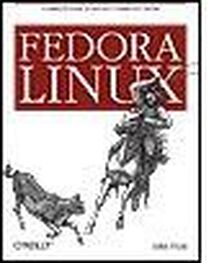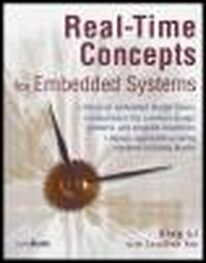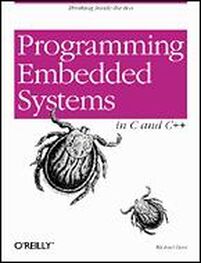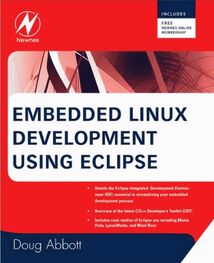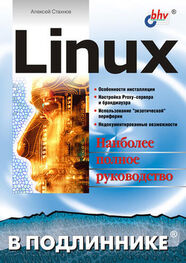If all the copyright holders agreed, the software could, in theory, be released under a new license, a very unlikely scenario indeed!
ATCA platforms are introduced in Chapter 3, "Processor Basics."
See www.compactflash.org.
Remember, you can change a 1 to a 0 a byte at a time, but you must erase the entire block to change any bit from a 0 back to a 1.
Directly in the logical sense. The actual circuitry may contain bus buffers or bridge devices, etc.
We discuss ramdisk file systems in much detail in Chapter 9, "File Systems."
Real-time clock modules often contain small amounts of nonvolatile storage, and Serial EEPROMs are another common choice for nonvolatile storage of small amounts of data.
In this discussion, the word task is used to denote any thread of execution, regardless of the mechanism used to spawn, manage, or schedule it.
Many good books cover the details of virtual memory systems. See Section 2.5.1, "Suggestions for Additional Reading," at the end of this chapter, for recommendations.
However, there is seldom a good reason to change it.
The term thread here is used in the generic sense to indicate any sequential flow of instructions.
In fact, it wouldn't even compile or link, much less run.
This package is important enough to warrant its own chapter. Chapter 11, "BusyBox," covers BusyBox in detail.
Linux has support for some basic processors that do not contain MMUs, but this is not considered a mainstream use of Linux.
32-bit and 64-bit refer to the native width of the processor's main facilities, such as its execution units, register file and address bus.
32-bit and 64-bit refer to the native width of the processor's main facilities, such as its execution units, register file and address bus.
These are the author's own opinions based on market observation and not based on any scientific data.
On the Freescale website, navigate to Media Center, Press Releases. This one was dated 10/31/2005 from Austin, Texas.
Source: www.mips.com/content/PressRoom/PressReleases/2003-12-22
Other peripherals include IrDA controller, LCD controller, 2 SPCs, Power management, DMA engine, RTC, Camera interface, LCD controller, h/w hardware acceleration of encryption/decryption, PCI host controller, 4 SPCs, and Security engine.
Reported by ARM to be the top-selling toy during the Christmas 2005 shopping season in the United States.
VMEbus isn't really a hardware reference platform, per se, but based on Eurocard physical standards, the level of compatibility among multiple vendors qualifies it for the label.
We talk about the kernel build system and makefiles shortly.
Throughout this book, three dots preceding any path are used to indicate whatever path it might take on your system to reach the top-level Linux source tree.
Executable and Linking Format, a de-facto standard format for binary executable files.
The linker script file has a peculiar syntax. The details can be found in the documentation for the GNU linker.
Not all these makefiles are directly involved in building the kernel. Some, for example, build documentation files.
Incremental linking is a technique used to generate an object module that is intended to be linked again into another object. In this way, unresolved symbols that remain after incremental linking do not generate errorsthey are resolved at the next link stage.
As mentioned, you can use the configuration editor of your choice, such as make xconfig or make menuconfig.
Better yet, make a backup copy of your .config file.
We have intentionally removed many options under ARM system type and Intel IXP4 xx Implementation Options to fit the picture on the page.
In actuality, the kernel build system is very complicated, but most of the complexity is cleverly hidden from the average developer. As a result, it is relatively easy to add, modify, or delete configurations without having to be an expert.
Always assume that features advance faster than the corresponding documentation, so treat the docs as a guide rather than indisputable facts.
The kernel image is nearly always stored in compressed format, unless boot time is a critical issue. In this case, the image might be called uImage, a compressed vmlinux file with a U-Boot header. See Chapter 7,"Bootloaders."
The term piggy was originally used to describe a "piggy-back" concept. In this case, the binary kernel image is piggy-backed onto the bootstrap loader to produce the composite kernel image.
Not to be confused with the bootloader, a bootstrap loader can be considered a second-stage loader, where the bootloader itself can be thought of as a first-stage loader.
The term machine as used here refers to a specific hardware reference platform.
Often called Instruction Pointer, the register which holds the address of the next machine instruction in memory.
Modifying head.S for your custom platform is highly discouraged. There is almost always a better way. See Chapter 16, "Porting Linux," for additional information.
Modifying head.S for your custom platform is highly discouraged. There is almost always a better way. See Chapter 16, "Porting Linux," for additional information.
Normally, the compiler will complain if a variable is defined static and never referenced in the compilation unit. Because these variables are not explicitly referenced, the warning would be emitted without this directive.
You might have to lower the default loglevel on your system to see these debug messages. This is described in many references about Linux system administration. In any case, you should see them in the kernel log file.
Userland is an often-used term for any program, library, script, or anything else in user space.
Especially the sections on function attributes, type attributes, and variable attributes.
Often embedded systems do not have user accounts other than a single root user.
BusyBox commands are covered in Chapter 11.
Device nodes are explained in detail in Chapter 8.
In actuality, modern Linux kernels create a userspace-like environment earlier in the boot sequence for specialized activities, which are beyond the scope of this book.
Читать дальше


